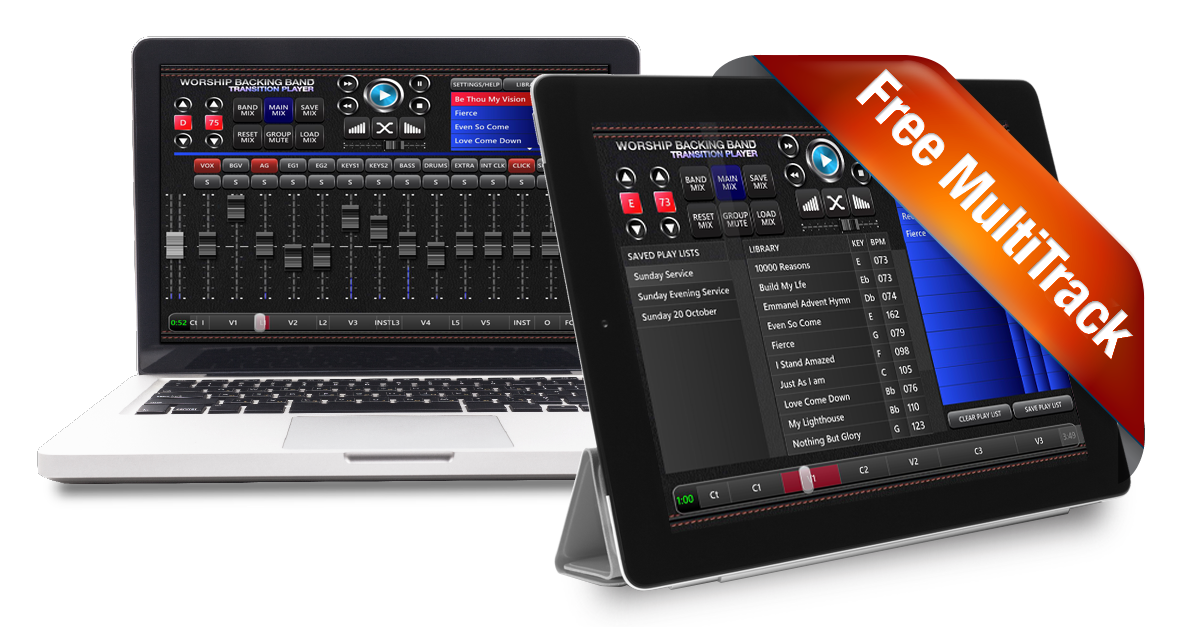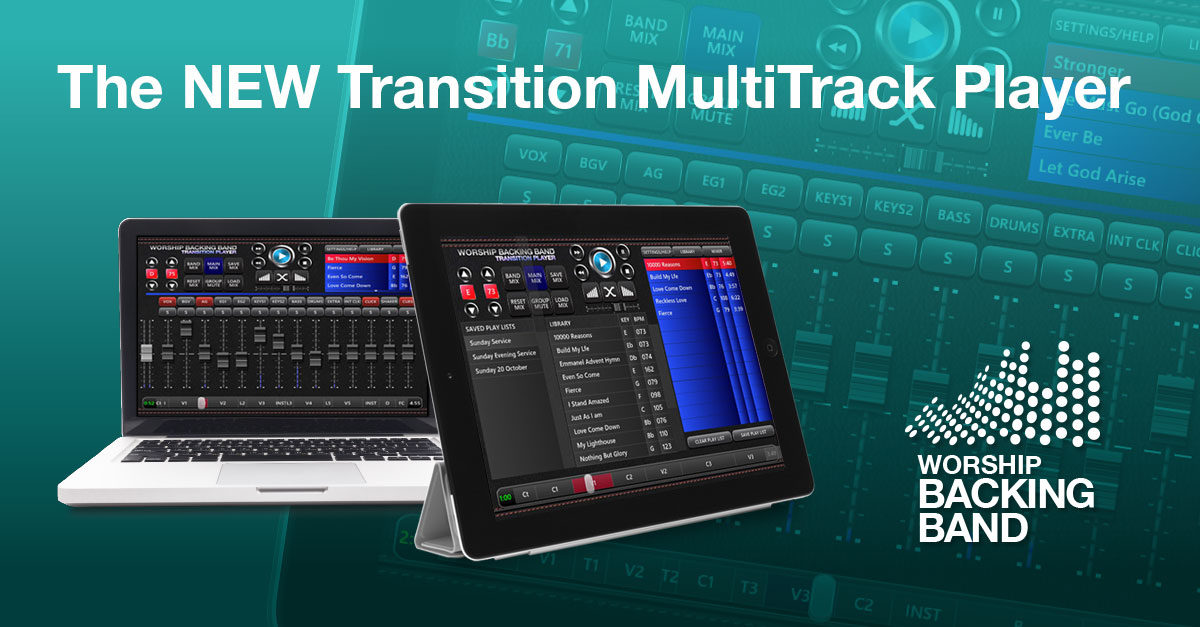How do I buy the iPad, Mac and PC Transition MultiTrack Player?
You purchase the PC/Mac Transition Player on the Worship Backing Band website.
You’ll then be shown (and emailed) a link to download the Player. This is also stored in My Account/My Downloadable Products on the webstore.
Click the Mac or PC link to download. If you see a warning message (eg Windows Defender SmartScreen message) please overrule the message. On Windows you do this by clicking More info and then Run anyway.
You will then be taken through a download process. Simply click to proceed as you would with any new software.
When you open the Player you’ll see the player window. This is re-sizeable by the user but always maintains the same aspect ratio (4/3). On a Mac, it you make it full screen, it will resize to a different aspect, but the basic relationship of the elements to each other remains, just with a bit more space in between. On Windows, the aspect is always constrained to the 4/3 aspect ratio.
iPad Transition Player
You have to buy the iPad Player from the App Store. Click Here
Note that iCloud Drive MUST be enabled to download and use the Player.
You cannot sync between the PC/Mac and iPad Players and these are separate purchases (i.e. you get both Mac and PC in the single Worship Backing Band website purchase but you will need to separately and additionally purchase the iPad Player from the App store.)



